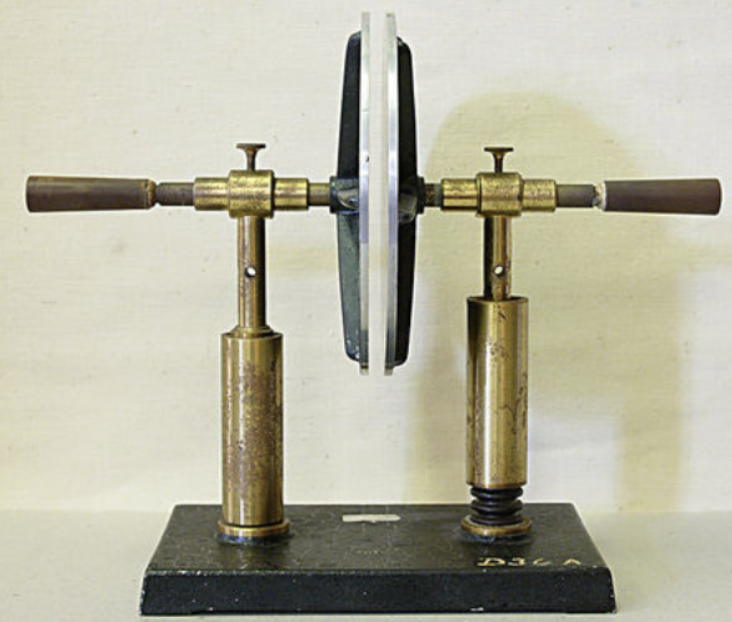What are the principles of inductance and capacitance?
In our previous article on inductance, we jumped into the behaviour of inductance and what it is. Now we’re going to look at the principles of inductance, as well as the principles of capacitance.
Inductance and Capacitance.
We’ve already touched on the surface of inductance in our previous article, now let’s find out even more. The behaviour of the inductor is based on the properties of the magnetic field generated in a coil of wire. We need to know the following two laws when we look at inductance:
- Ampere’s Law: current in a coil ⇒ magnetic field.
- Faraday’s Law: time-varying magnetic field ⇒ induced voltage (emf).
The time-varying magnetic field is produced by a changing current, and the behaviour of the capacitor is based on the properties of the electrical field created in a non-conductor that is placed between two conductors. In other words, the capacitor is a non-conductor sandwiched between two conductors.
Energy isn’t generated by an inductor or capacitor but is stored in them. This means they are passive devices. The inductor stores energy in it’s magnetic field, and the capacitor stores energy in its electric field.
Energy stored in an inductor
The energy stored, W, in the magnetic field of an inductor is given by:

If we look at an example to fully understand it, let’s imagine an 8-H inductor has a current of 3A flowing through it. We can calculate the energy stored in the energy field of the inductor by:

The capacitor
Capacitors are short-term ‘charge-stores’, similar to batteries. While a battery produces e-s, capacitors just stores them. It consists of two metal plates separated by a layer of insulating material called a dielectric.

There are two types of capacitors:
- Electrolytic capacitors: these hold much more charge and have to be connected with the correct polarity, or they can explode.
- Non-electrolytic: these hold less charge and can be connected either way around in a circuit.
How does a capacitor work?
When two conducting plates are connected to a battery, electrons move towards one plate. The positive plate loses electrons, and eventually both plates are left with equal and opposite charge. When a capacitor is charged, i.e when the electrons are no longer moving, the capacitor is said to have charge Q.

The working voltage is equal to the maximum potential difference that can be applied, and above this, the insulation of the dielectric breaks down.
Capacitance, C, is “the charge, Q, required to cause unit potential difference, V, in a conductor. It’s measured in Farads (normally mF or μF)”. 1 Farad is the capacitance of a conductor, which has potential difference of 1 volt when it carries a charge of 1 coulomb.
Charging a capacitor using D.C
At any time, t, after the switch is closed, the charge, Q, on the capacitor can be calculated using Q=It.

The variable resistor can be altered to keep the current constant, which is not easy! When the current is constant, then we would calculate the charge and take a reading of the p.d. If we plot a graph of capacitance against voltage, it looks like this:

The gradient of the graph will equal the capacitance of that capacitor.
Charge stored in a Capacitor
Electrical potential energy is stored when a capacitor is charged. The energy stored is equal to the work done to force extra charge Δq (i.e. from q to q+Δq) onto the plates and is given by ΔE=vΔq, where v is the plate potential difference.
The area under the graph is equal to the energy stored = (½bh)
We can combine previous equations to give the following:
Let’s look at an example to see how it all works. Imagine a heart defibrillator that delivers 4.00 x 102 J of energy by discharging a capacitor initially at 1.00 x 104 V. We want to figure out what it’s capacitance is.
We are given Ecap and V, and need to find C, the capacitance. Of the three equations we could use, the most convenient one is

So, when we solve this expression for C and enter the values we’re given, we get

This is a fairly large, but manageable, capacitance at 1.00 × 104 V.
Interested in our courses?
You can read more about our selection of accredited online electrical and electronic engineering courses here.
Check out individual courses pages below:
Diploma in Electrical and Electronic Engineering
Higher International Certificate in Electrical and Electronic Engineering
Diploma in Electrical Technology
Diploma in Renewable Energy (Electrical)
Higher International Diploma in Electrical and Electronic Engineering
Alternatively, you can view all our online engineering courses here.
Recent Posts
Understanding and Calculating Generator Efficiency and Output Parameters
Understanding and Calculating Generator Efficiency and Output Parameters Introduction The performance of a generator is often judged by how efficiently it converts mechanical energy into electrical energy. Understanding and calculating this efficiency, along with other key output parameters such as voltage, current, power factor, and load, is essential for evaluating performance and ensuring reliable operation. […]
Essential Cooling and Protection Devices: How They Work and Why They Matter
Essential Cooling and Protection Devices: How They Work and Why They Matter Introduction Generators produce a significant amount of heat and electrical stress during operation, which can affect performance and lifespan if not properly managed. That’s where cooling and protection devices come in. These essential systems, including fans, radiators, circuit breakers, and relays, work together […]
Justifying the Choice of Generators Based on Requirements and Characteristics
Justifying the Choice of Generators Based on Requirements and Characteristics Introduction Selecting the right generator isn’t just about power output, it’s about finding a machine that meets specific operational needs, efficiency goals, and environmental conditions. Different applications demand different generator types, capacities, and features. In this article, we’ll explore how to justify the choice of […]

